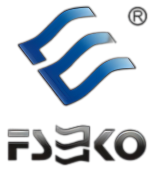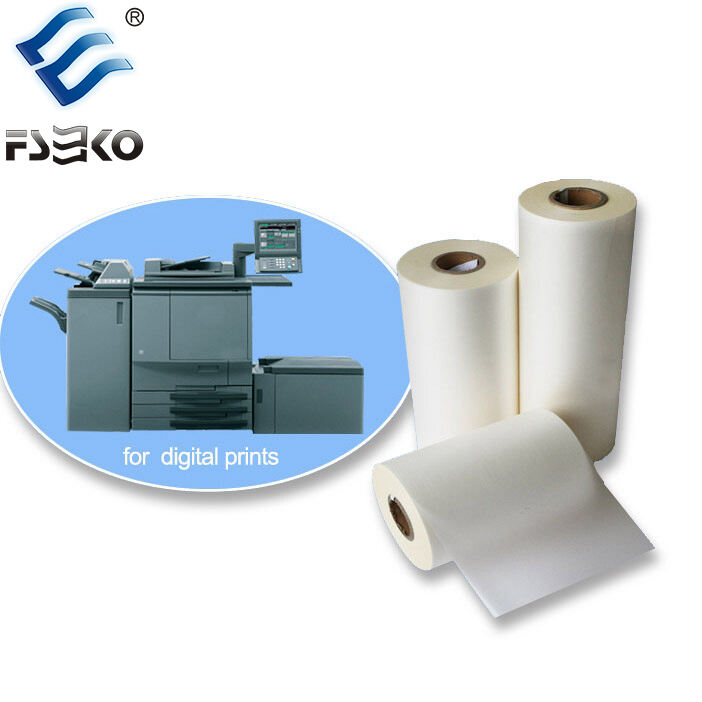What Is Digital Lamination Film?
Core Components and Manufacturing Process
ON DIGITAL LAMINATION FILMDigital lamination film is produced by several key elements, and most fundamentally including polyester base film and adhesive coating and protective layer. The polyester is what gives it the needed durability and strength to protect prints. At the same time, the adhesive layer also creates a bond to printed material, preserving the integrity of the film over its lifespan. The production process usually includes extrusion — an advanced method in which polymers are melted and shaped into a film. Extrusion must successfully take place in a controlled environment to obtain the thickness and smoothness, which are required quality. Furthermore, quality control procedures, including temperature tolerances and flex tests, are rigorous to ensure the best performance in all printing applications.
How It Differs From Traditional Lamination Methods
Digital lamination film offers a major improvement over conventional lamination processes such as wet and thermal lamination. Among the best advantages, there is no heat applied when being installed which reduces damage and/or warping of sensitive prints. This is particularly beneficial for toner based digital prints as these may suffer from adhesion issues to standard laminating films resulting in areas peeling or air pockets. The highly adhesive process in digital lamination films also provides excellent long-term performance and durability over traditional delamination-prone methods. In addition, the flexibility of digital lamination film makes it an ideal solution for numerous digital prints, reducing production time and eliminating the set-up and set-down requirements.
Top 3 Benefits of Digital Lamination Film for Printers
Enhanced Durability Against Wear and Tear
Digital lamination film has been engineered to withstand tough conditions and is resistant against environmental factors such as moisture and UV radiation - meaning long lasting printed materials. This makes it ideal for use in brochures and packaging that will be manipulated regularly. According to studies digital laminated prints will last between two to three times longer than standard lamination, providing higher value to the printer and the printer's customer. Furthermore, this longevity also means cost-saving long-term, as there is little reprinting required.
Scratch-Proof Protection for Long-Lasting Prints
Digital lamination film also offers the added benefit in that it is scratch-resistant, meaning the high quality of the print is not compromised once laminated. It's an important feature as there are materials you'll be touching/holding/displaying a lot, and you still want them to look brand new long after they're done! Industry leaders confirm that scratch-resistant coatings keep the print looking new even in heavy traffic applications, a must for marketing graphics and signage. Scratch-resistant digital lamination will ensure customers are satisfied with the end product as they receive a high quality print product that is durable.
Professional-Grade Finish for Client Impressions
The digital lamination provides the luxury look and feel that the customers want for their printed items, for premium printed pieces, and to make their printed pieces look more exclusive. Print quality is paramount More than 70% of consumer buying decisions are informed by a product’s appearance, reinforcing the importance of professional-quality output when comparing products from different print shops. What’s more, the choice between matte and gloss finishes gives you the flexibility to customize your printing job to your client’s specific requests (as well as the market you serve)— allowing you to serve an even larger client base.
How to Apply Digital Lamination Film Correctly
Step-by-Step Guide for Bubble-Free Application
Use: Digital lamination film is a practice in precision and attention to detail for the best results. Begin with the front of the print's surface, taking great care to peel any dust or contaminants off to prevent bubbles. This part is important in getting a nice smooth surface. Then, you must position the film properly on the whole printing area without over lapping. Remove the liquid using a squeegee and push any air pockets to the edge of the film. After the sheet is placed, do a final check to make sure it went on smoothly without having any bubbles or defects. If you want to know the methods used by a professional, similar methods share by professionals but you can carry it out carefully to apply it to bubble free.
Common Mistakes to Avoid During Installation
Making no mistakes when installing digital lamination film is crucial for the preservation of the print. A common mistake is improperly rolling the film and thus, uneven coverage and waste. This is important as in order to prevent that happening the film should be accurately measured and centered. It can also be caused by poor handling) And it's not like you are likely to let the cement cure too long anyway -- typically this happens inside of a week. Always hold the film by its edges so you do not transfer finger oils or dirt onto the adhesive. Slapping down the application without taking your time can mean wonky application and bubbles not pressed out. If you just take your time and keep from making these errors, the finish will just last as long as it possibly can.
Maintaining Equipment for Optimal Film Adhesion
In order to achieve this, it is important that lamination equipment be maintained. This means cleansing of the rollers and blades so that no particles interfere in the campaign. And we must not forget the tension and temp setting, not only can inconsistent settings lend themselves to a vast array of application issues. By setting it correctly, lamination film adherence can be dramatically improved. The benefit of maintaining the record and checking equipment frequently is that it will help to notice any trends of wear or malfunction which would impact on the performance of the equipment. Regular service guarantees your machine is in peak condition and that you receive the best possible results for your digital lamination jobs.
Choosing the Best Digital Lamination Film
Key Features of High-Performance Scratch Proof Film
The thickness and scratch resistance are some of the main points to consider when choosing digital lamination film. Top-end options usually fall in the 1 to 10 mil range, for different levels of strength and protection. Most brands will showcase the performance numbers of their products (like scratch tests and UV certificates), meaning that they are manufactured with quality in mind. Industry reviews and, of course, user opinions can provide some additional sense that what you re spending money on is one of the most reliable products available. For instance, scratch resistant films can help preserve prints for years in conditions where prints are handled, shipped, or otherwise moved by hand.
Matte vs Glossy Finishes for Different Applications
As far as matte or glossy finishes are concerned, it often comes down to the desired use-case. Matte finishes are non-reflective, for those concerned with glare on their signs, or when an image just needs to be seen not admired, such as framed prints and interior signage. Glossy coatings can accentuate vivid colors, and are preferable for promotional materials like those for photographic companies or smooth, bold color images where visual impact is a high priority. When choosing a finish, consideration must be given to client needs and the context of the application of the finish, for each one plays a different role in contributing to the overall aesthetics. "You can get more specific too! Gloss might imply excitement and attention (but nothing super sophisticated) in a business setting, while a more matte laminate might appear more professional or sophisticated.
Where to Find Industrial-Strength Film Online
When you’re looking for commercial-grade digital lamination film, it’s necessary that you carefully consider who you buy it from and its features. Quality usually is higher with good printing supplies providers. You can get an idea of product satisfaction and vendor reliability before you buy, by checking customer reviews and ratings. So, it’s helpful to compare others prices and features across the boards to see who has the best prices out there for different Bus applications. “Finding reliable market places is key so that you know what kind of quality to expect and when to expect,” supply chain professionals said. A personalized pair of top-of-the-line lamination films can save you money in the long run through quality production and client satisfaction.


